A friend recently asked me on LinkedIn about Inventory ABC analysis on Maximo and how to setup physical cycle count. After responding to him, I thought it could be posted on this blog to share with other Maximo users who like to know more about this function.
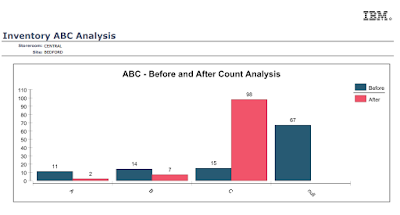
ABC Analysis is the method of categorizing inventory items into three groups: fast-moving, average, and low-moving. This method is commonly used in ERP systems like SAP or Oracle. However, it is less frequently used in Maximo Inventory.
The concept of fast-moving or slow-moving refers to the total financial movement of inventory. For example, if the inventory has 3 items:
- Toilet paper: $2 per Roll, company uses 10 roles/day or $20/day, movement of this item is $7300 per year
- Printer toner: $100 per Each, company replaces them every 2 months, thus movement is $600 per year
- Computer laptop: $2000 per Each, company issues only two items a year, thus $4000 movement a year
Total movement is $13.900
If A, B, C is defined as the items that accounted for the top 30% of the movement, middle 40%, and bottom 30%, Toilet paper is a fast-moving item and belongs to Category A, and Toner is a slow-moving item.
In Maximo, there’s a standard out-of-the-box report for ABC Analysis. After the report calculated the consumption value and produced A,B,C values associated with each item, we can update the ABC values back to the inventory by clicking on the link at the bottom of the list.

For physical count, we can set in organization settings to define the physical cycle duration for each ABC category so that Maximo will automatically set a due date to do a physical count for each item depending on its category. Some companies only carry out physical counts as part of inventory/accounting audits, thus they only do it once per year, for the whole inventory, usually before fiscal year-end. Other companies with more mature processes have different cycle count durations for each category, such as 3 months for fast-moving items, and 1 year for slow-moving items, this varies a lot depending on each industry.
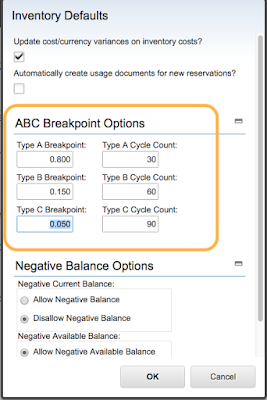
With the Anywhere Physical Count mobile app or other 3rd party mobile solution, the app will download the items that are due to count so that warehouse staff can go out after a specific list of items do a physical check then update the actual count. This value is synchronized to Maximo, and if there is a difference in Maximo’s current balance vs actual count (usually actual count is less than the real balance due to theft, loss, or temporary issues that are forgotten and or issues that aren’t entered into the software), we can run Reconciliation process to update new balance and record the “loss” to shrinkage account.
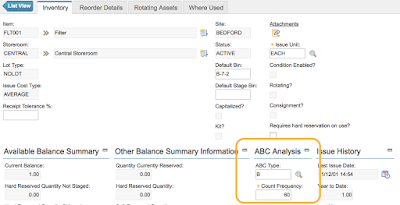
In practice, many companies prefer to record this “loss” as a standard “Issue” transaction against shrinkage accounts because it is simpler to do so. Besides, if there’s integration with ERP/Finance system, this makes things simpler as the transactions will be posted to the ledger without having to build another interface (Issue transactions and Reconciliation transactions are stored in two different tables). We can also create a logical “Shrinkage” location with the right GL account so the user only has to issue against this location and thus doesn’t have to remember the GL account combination.
Some companies also combine the ABC category with the criticality of items (High, Medium, Low), so in their Maximo system, you will see strange values such as CH, AM, or BL. The idea is for process or safety-critical items, in many cases, even if they are slow-moving, it is still important to do frequent physical checks to ensure they are always available to use in case needed.


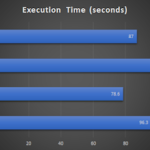
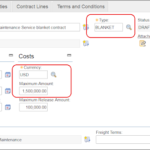
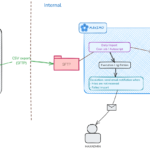
Some companies combine A-B-C (avgcost) with H-M-L (consumption qty) based on Pareto Principle (ex. 20%-16%-64%) to define ABC ranking and so on…
Interesting article, Viet. I've explained this somewhat differently in the past but I believe we get to the same point.I explain the topic based on Value derived as the cost of the item times the number of times it rotates (similar). With this in mind, the High Value items get counted more frequently. Though, in practicality, many of the storerooms I've visited count once a year as you mention.
Yes..Its a good approach when Maximo is integrated with an ERP system…We may have to define a type for these issues (Inv. usage transactions) to differentiate with work order or material request based issues
Thanks for article. Are you able to bring back physical counts across multiple bins, .ie bins c-f? As far as I read Anywhere does not allow queries, https://www.ibm.com/support/knowledgecenter/en/SSPJLC_7.6.0/com.ibm.si.mpl.doc/configure/t_add_query_app.html
Any suggestions on how to accomplish a simple count across multiple bins(somewhat dynamic…)
Thanks in advance
You are talking about Annual Issue Quantity (AIV) here and used for ABC, which in my terminology is different to Movement. Movement or demand rate is based on Fast, Med, Slow or VS & N
HML is usually base don Unit Cost, High, Med & Cost
Hope that helps
Dave (linkedin Owner) MRO Spare Parts Optimisation & Inventory Reduction
In my first CMMS circ late 1980s you could set up Cycle Counting ie for each spare part to set a start date and a frequency just like a PM. I am not upt todate with 7.6 is this feature available
Just reread this artcle, can anyone share a Maximo screen shot of where you set up the start date for the cycle count to begin at the specified frequency
Regards
Good article – helpful for newer users like myself as I support the business users in setting up the ABC here.
On a related question – is there a standard report in 7.6 that can be run for a specified time period that shows all of the reconciled transactions with their quantity/cost impact? i would think that would be out of the box reporting as every org would want that info but i don't see any such report. Thanks!